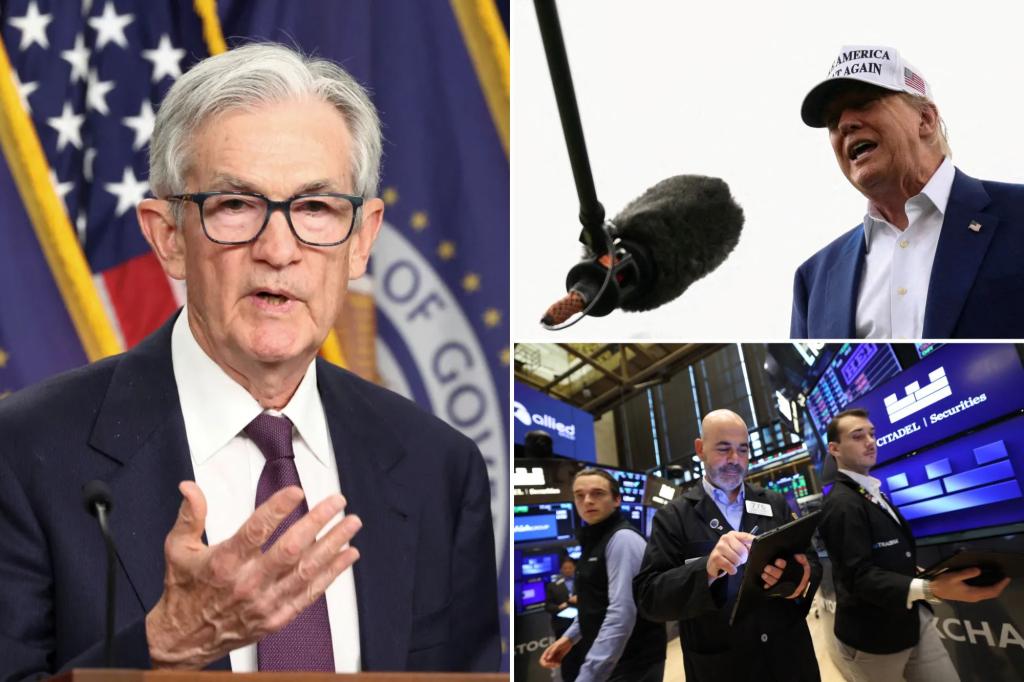
The Federal Reserve on Wednesday once again left interest rates unchanged and kept its forecast for two cuts later this year — but said uncertainty on the economic impact of President Trump’s tariffs has “diminished.”
In new economic projections, policymakers sketched a modestly stagflationary picture of the US economy, with economic growth slowing to 1.4% this year, unemployment rising to 4.5% by the end of this year, and inflation finishing 2025 at 3%, well above the current level.
While policymakers still anticipate cutting rates by half a percentage point this year, as they projected in March and December, they slightly slowed the pace from there to a single quarter-percentage-point cut in each of 2026 and 2027 in a protracted fight to return inflation to the central bank’s 2% target.
The Dow Jones Industrial Average rose 107 points, or 0.3%, after the report’s release, while the S&P 500 and Nasdaq jumped 0.2% and 0.3%, respectively.
Ahead of Wednesday’s policy note, Trump continued to pressure “stupid” Fed Chair Jerome Powell to slash rates, arguing the key borrowing rate should be at least 2 percentage points lower.
“Frankly, you probably won’t cut today,” Trump said outside the White House hours before the policy note’s release.
“Europe had 10 cuts, and we had none. And I guess he’s [Powell] a political guy, I don’t know. He’s a political guy who’s not a smart person, but he’s costing the country a fortune.”
Trump mused that he would make a better Fed chair when Powell’s term expires next year.
“Am I allowed to appoint myself at the Fed? I’d do a much better job than these people,” he said.
The Fed’s decision to keep interest rates unchanged in the target 4.25% to 4.5% range comes as Trump has implemented stiff tariffs on many nations, including a total 55% rate on China and 10% on most other countries.
May’s consumer price data showed inflation rose less than anticipated, but economists have warned that the tariff-related impact will start creeping into data this summer.
“Prices are set to meaningfully rise once the inventory of front-loaded pre-tariff imports is sold off,” Mark Zandi, chief economist at Moody’s Analytics, wrote in a social media post this week.
“Large businesses will take a bit longer to raise prices, but only a bit. They have flexibility as their profit margins are fat in the wake of the pandemic price hikes, and they are hoping beyond hope the tariffs are temporary,” Zandi added.
Meanwhile, the Israel-Iran conflict entered its sixth day of warfare on Wednesday, stoking concerns it could upend global oil prices and supply, while the Israel-Hamas war raged on.
Ahead of the meeting, markets had largely priced in the next rate cut to come in September, according to CME FedWatch.
Bank of America said it does not expect any rate cuts this year, though it will leave the door open for one.
Goldman Sachs said it expects only one rate cut this year.

